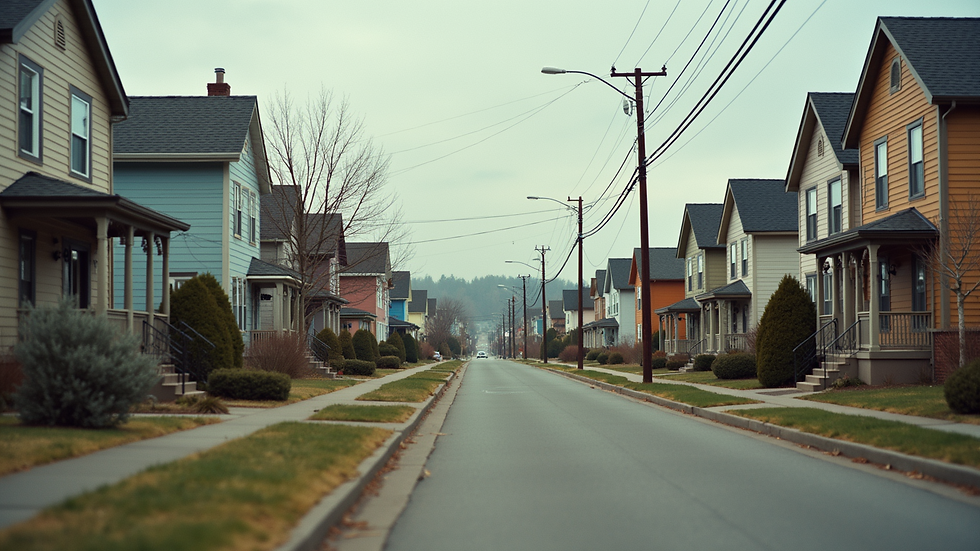Affordable Housing Solutions for Economic Growth
- Edith Keshi
- Aug 7
- 3 min read
Affordable housing is not just a matter of providing shelter; it's a crucial component for economic growth. Many cities and regions face a crisis due to the lack of adequate housing options that are affordable for average citizens. When people have stable housing, they are more likely to contribute positively to their communities and the economy. In this blog post, we will explore various economic housing solutions that can foster growth and improve the quality of life for everyone involved.
Economic Housing Solutions
To tackle the challenge of affordable housing, various economic housing solutions have emerged that governments and organizations worldwide are adopting. These solutions are not only about building more homes but also about creating an ecosystem that supports sustainable living.
1. Public-Private Partnerships
Public-Private Partnerships (PPPs) have proven to be effective in various sectors, and housing is no exception. For example, city governments can collaborate with private developers to build affordable housing projects. The government can provide land, subsidies, or low-interest loans, while the private sector brings expertise in construction and management.
An example of success is the partnership between the City of Atlanta and private developers, which resulted in the creation of multiple affordable housing units in urban settings. Such collaborations can help in reducing the financial burden on both parties while making affordable housing a priority.

2. Inclusionary Zoning
Inclusionary zoning is another effective strategy that mandates developers to include a certain percentage of affordable units within their projects. This approach ensures that new developments contribute to the availability of affordable housing stock.
For instance, cities like New York and San Francisco have successfully implemented inclusionary zoning policies. By requiring developers to allocate a portion of units for affordable housing, cities can create diverse neighborhoods without compromising the quality of life for lower-income families.

What is the Biggest Issue with Affordable Housing?
One of the most significant challenges with affordable housing is the rising cost of land and construction. The price of land in urban centers skyrockets, making it increasingly difficult for developers to build affordable units without incurring substantial losses. As a result, many developers shy away from affordable projects, leading to a shortage of housing options for low-income individuals.
A 2021 report from the National Association of Home Builders stated that the average cost of constructing a single-family home has increased by over 20% in a five-year period, due partly to these rising land costs. This trend exacerbates the housing crisis and complicates the creation of sustainable solutions.

3. Adaptive Reuse of Existing Buildings
Adaptive reuse is a strategy that involves repurposing existing structures into affordable housing. Instead of starting from scratch, developers can transform vacant commercial buildings or underutilized properties into living spaces. This method not only speeds up the housing development process but can also be more environmentally sustainable.
For example, in many cities, former factories and warehouses have been converted into loft-style apartments that offer a unique living experience. The reuse of existing structures can significantly reduce construction costs and lessen the environmental impact associated with new builds.
4. Tiny House Movement
The tiny house movement has gained traction in recent years as a minimalist approach to living. These small homes often require fewer resources, both financial and physical, providing an affordable housing solution for many individuals and families.
Communities across the country have started embracing tiny home villages that offer not only shelter but also foster a sense of community among residents. For instance, cities like Fresno, California, have developed tiny home projects specifically for homeless individuals, demonstrating a successful model for affordable housing.
5. Government Incentives and Funding
Finally, government incentives play a crucial role in promoting affordable housing solutions. By offering tax credits, grants, or low-interest loans, governments can encourage developers to invest in affordable housing projects.
The Low-Income Housing Tax Credit (LIHTC) program is an excellent example of this approach. It has been instrumental in financing thousands of affordable housing units across the United States. By incentivizing developers, the government can ensure that affordable housing remains a priority in urban and suburban areas alike.
The Path Forward
The need for affordable housing solutions is urgent. The strategies mentioned in this blog posts provide not just a way to create housing but also opportunities for economic development and community enrichment. By investing in these initiatives, cities can stimulate their economies and provide their citizens with the stable housing they deserve.
We must work collaboratively—governments, developers, and communities alike—to ensure that affordable housing becomes a reality for everyone. To learn more about affordable housing solutions, consider checking additional resources like this blog.
While the challenges are significant, the continued innovation and cooperation among stakeholders offer hope for brighter, more inclusive neighborhoods.



Comments